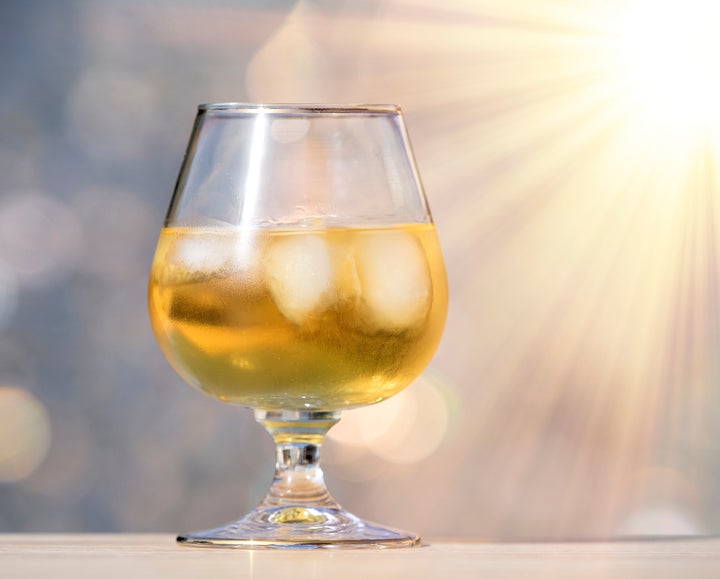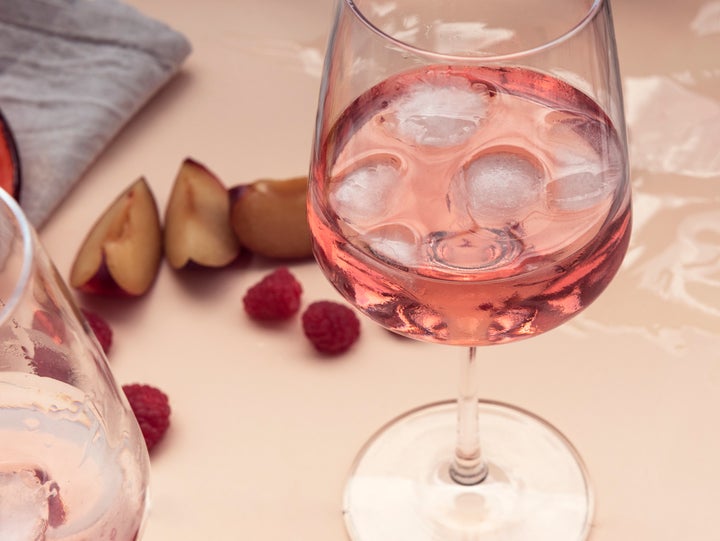
You do it with soft drinks, iced tea, water and all sorts of summer cocktails. So why do wine snobs turn up their noses when they see you adding a few cubes to a warm glass of rosé?
There are some logical reasons given by true oenophiles, but there’s also a changing wine culture that rules it to be acceptable, at least in some more relaxed circles.
This is your wine on ice.
Before you get too heavy-handed with the Sonic-style nuggets in the chardonnay, it might help to realise the “why” behind the long-standing edict of serving wine only at a prescribed temperature.
Ashley Herzberg, a winemaker for Avaline Wine, offered this explanation: “Ice does change the character of wine in many ways. It can alter the mouthfeel by diluting the alcohol, modify the acidity by increasing the pH and, of course, it can dilute the flavours. This isn’t necessarily a bad thing, but it does change the wine from the vision the winemaker had on bottling day.”
Even with that proviso, Herzberg feels it’s time to remove the stigma. “The beauty and drawback of something with as much history as wine is all the perceived etiquette that comes along with it,” she said. “The rules are too rigid, and we should be able to be more creative and tailor a drinking experience to our own preferences.”
While water molecules dilute alcohol and flavours, there are other ways ice can affect the beverage, according to Art di DeCaro, certified sommelier and director of training and cellar master at Waters Edge Wineries. “Temperatures cooler than a wine’s regular service temperature make a wine ‘tight’ and reduce aromas, which in turn further reduces overall flavour perception,” he said. “Essentially, you might lose some of the complexities and nuances that make the wine special in the first place.” Even with that caution, he noted that it’s good to keep your objective in mind: “Ultimately, it’s about finding what works for each individual.”
Some somms say “no way.”
Some wine experts are firmly in the “bad idea” camp. Sommelier Billy Turner, who works at Atlanta’s Kimpton Shane Hotel, said he normally advises “you do you” when it comes to wine, but added, “that doesn’t extend to putting ice in your wine. I believe this is the only hard, fast and rigid wine rule.”
He painted a picture of the best possible drinking experience: “Have you ever had a glass of chardonnay right out of the cooler, nicely chilled to the proper temperature, between 45 to 55ºF? You get all these bright citrus and tropical fruit notes, with just slight hints of oak and vanilla. As you slowly sip and it begins to warm up just a bit, you start to pick up on more of the creaminess, and the oak starts to come through more with hints of vanilla.
“That’s because some flavours are more prominent than others at a higher temperature. You’d lose all of that with a super chilled, ice-filled wine. Not to mention, unless you chug the whole glass, your final sip is going to be mainly melted ice water, and no one wants that to be the last taste you remember.”

Others say it’s just fine.
“Wine culture is evolving, and there’s a growing acceptance of personal preferences,” said Mari Coyle, vice president of winemaking at Foley Family Wines and winemaker at Chateau St. Jean. “While understanding traditional practices behind wine can enhance appreciation, your own preference should always guide your choices,” she said. “If putting ice in wine enhances your enjoyment, then it’s the right choice for you. Wine culture should be inclusive and flexible, allowing everyone to find their own path to enjoyment.”
Malek Amrani, founder and winemaker at The Vice Wine, said that adding ice is perfectly OK, explaining it this way: “Most wine made around the world has an alcohol by volume (ABV) of 12 to 14%, so the rest of the liquid in wine, about 85%, is water, and ice is water.” The way he sees it, “it all mixes together inside, so why not?” he asked. ”Plus, it helps you stay hydrated.”
Alex Ring, the Michelin Guide Chicago 2023 sommelier award winner and wine director at restaurants Sepia and Proxi, both in Chicago, takes a flexible approach: “To me, the question of ice in wine is really just a question of context,” he said. “Teasing out the nuances of a fine wine is a fun pursuit, but I think it’s also important to step back and enjoy an everyday wine for what it is — a beverage. My goal is to get people to enjoy their wine as much as possible. If that means providing some ice, I’m happy to facilitate.”
Do experts ever add ice to their own glass of wine?
“I can honestly say that I’ve put ice in a glass or two of rosé in my lifetime,” Herzberg said. “On a warm day, I don’t mind the dilution, and I still get many of the flavours to shine through. I also know our co-founder of Avaline, Cameron Diaz, enjoys ice in her wine on occasion. Wine is such a personal experience, and we have customers who prefer their wine over ice for one reason or another, and I think that’s totally fine. Tailoring your drink to your own palate is always a great approach.”
I enjoy ice in my wine spritzers,” DeCaro said. “During the warm summer months, I might add a couple of large cubes, or a large cocktail cube — which reduces overall surface area and makes the ice melt more slowly — to chill a crisp white or rosé wine with a splash or spritz of sparkling water. It’s a refreshing way to enjoy wine by the pool or on the beach without compromising too much on flavour.”
If you want to add ice, this is how to do it.
Just as you shouldn’t salt your food before tasting it, you’ll want to take a few sips before doing anything. Herzberg said, “I would always recommend tasting a wine first, so you know what the starting flavours and characters are before adding ice. Another tip I share with customers is to try to have your wine already chilled so the ice melts slower and the dilution doesn’t happen too quickly.”
“When I’m dining out or at an event at which I’m served a warm glass of wine, I always slip an ice cube into my wine glass,” said Amrani. “I never pour wine over ice, but rather add the ice to the wine. I like to start with an ice cube or two and go from there.”
Here’s how to get wine chilled faster.
If you’re trying to avoid the effect of adding ice, there are still quick ways to cool wine down, no cubes required. Herzberg shared this hack: “I like to wet down a kitchen towel, wrap it around a bottle of wine and stick it in the freezer for 20 minutes.”
If you need something faster, give the bottle an ice bath. “Adding salt to the ice bath also causes what we call freezing-point depression, or decreasing the freezing point of water, which makes the ice melt more slowly, chilling the bottle more effectively and quickly,” DeCaro said. “Spin the bottle periodically to increase the chilling effect.”